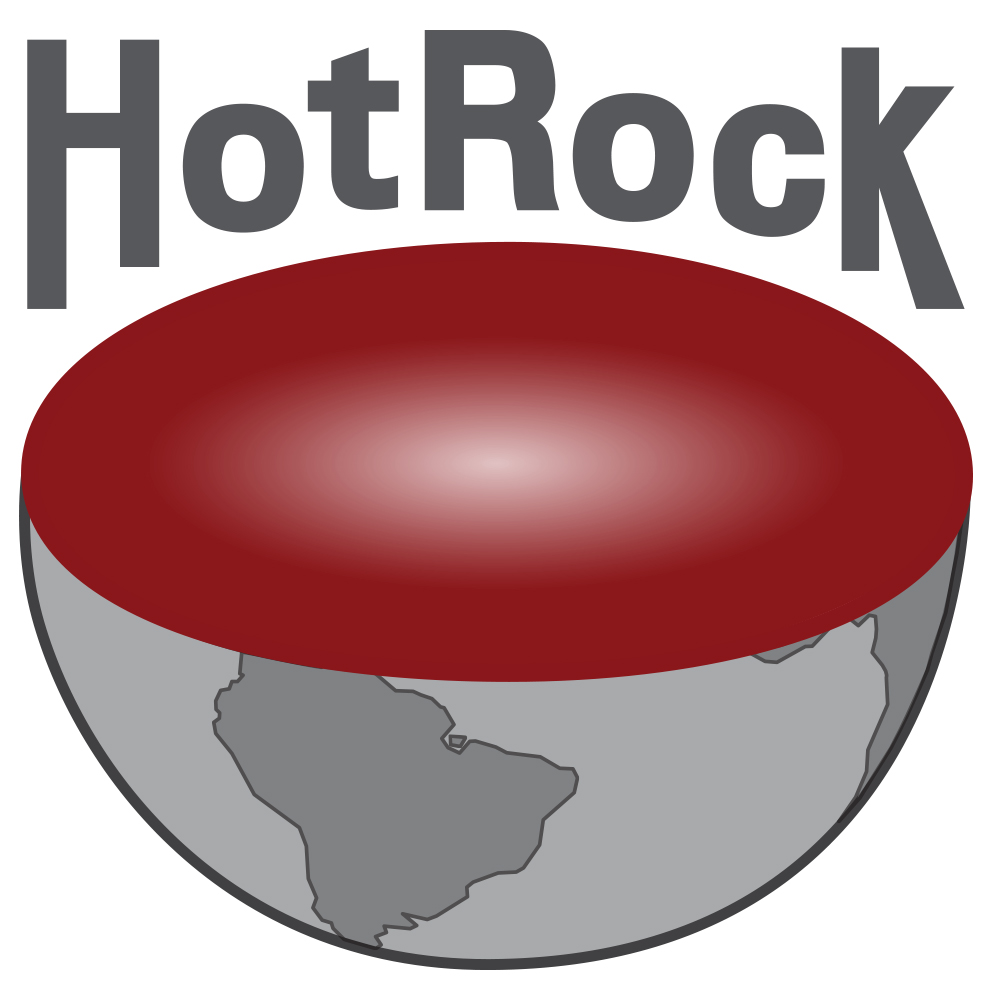Geothermal
Geothermal energy; clean, baseload electricity generated off the heat of the Earth, has been a small part of the US and world energy picture for a hundred years – that is changing now! The Bureau, with deep expertise in N-dimensional sub-surface characterization, is working to advance the science behind geothermal resource exploration and assessment, as well as working with industry and the engineering sciences to tap this energy source.
The Bureau of Economic Geology has a long history of working on geothermal energy research, from initial reconnaissance of conventional geothermal resources and analysis of development potential in Texas in the 1970’s to present-day work on applying the new paradigm of deep closed-loop systems. These new engineering approaches (fig. 1), in combination with conventional hydrothermal systems hold the promise of making geothermal energy available anywhere, dramatically improving the global energy picture.
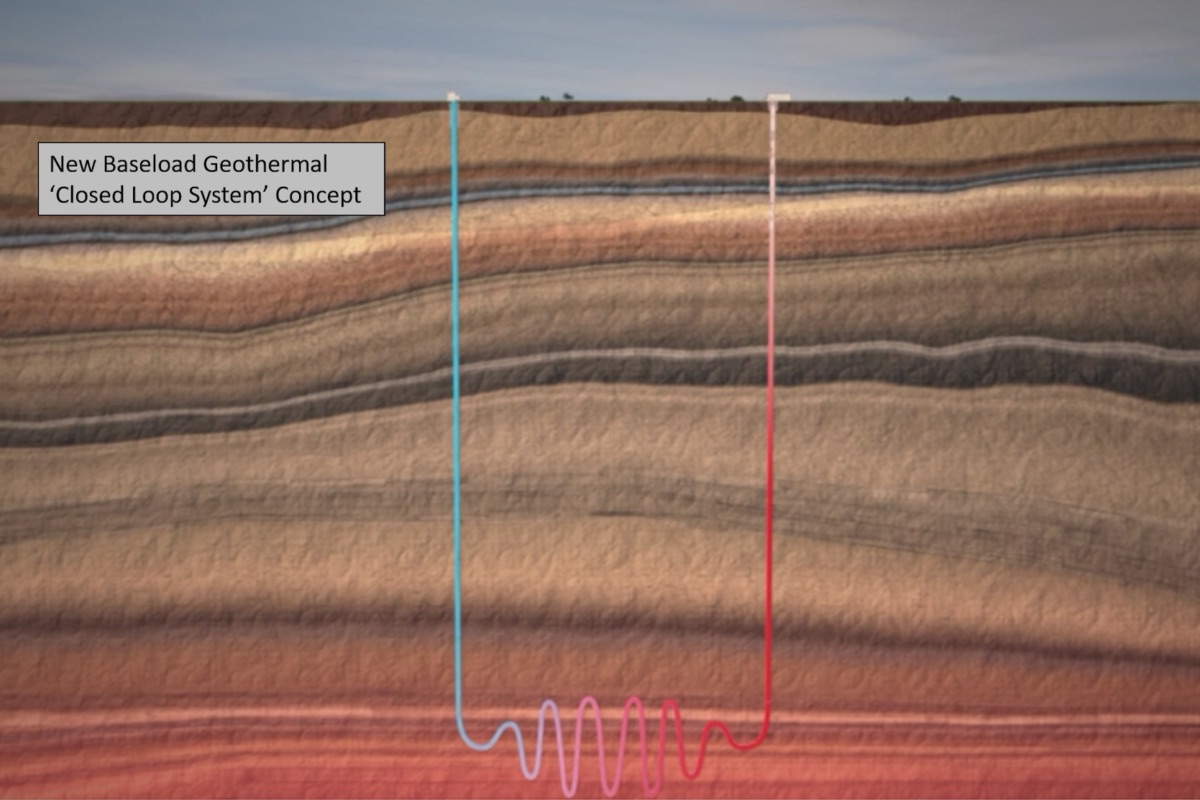
Figure 1. The deep, closed-loop geothermal energy generation concept. Unlike conventional geothermal energy generation, which must be located where nature concentrates heat (i.e., shallow magma bodies), the new paradigm will enable drilling almost anywhere to reach deep enough to get to sufficiently high temperatures (credit Jamie Beard, InnerSpace).
Geothermal Projects and Major Proposals at the Bureau
| Funder | Project | Status |
|---|---|---|
| USAF | 3MW plant in Houston (Ellington Field) | Phase II |
| Mitchell Foundation | Geothermal resource assessment for Texas | Final Editing |
| DOE | Heating for Cornell University campus (sub) | Starting |
| DOE | Geothermal Entrepreneurship Organization | Complete |
| Schmidt Futures | Texas Geothermal Institute feasibility (independent, multi-institution research organization) | Customer/market discovery |
| InnerSpace | Conversion of Coal Plants to Geothermal | Proposal |
| InnerSpace | Geothermal Assessment of the 100 largest cities in the world | Proposal |
| NSF | Innovation Engine - Geothermal | Proposal |
| Industry | HotRock Research Consortium | Start-up |
The Bureau is on the forefront of the resurgence of geothermal-resources innovation, exploration, and assessment. We are part of a major Department of Energy project to spur innovation in geothermal technology and are applying new analytic approaches, including big data and machine learning, to significantly improve our knowledge of the resource in Texas, the United States, and beyond.
What is Geothermal Energy?
Vast amounts of geothermal energy are stored in the crust of the Earth, renewed constantly by the heat flowing from the 6,000°C (~11,000°F) core. $ TeraWatts of energy flow continuously through the Earth’s crust and into space, but even more significant is that crustal rock is a great heat reservoir. Thousands of time the energy needs of the world is stored in the upper 10 km of the Earth’s crust, waiting to be tapped. Traditionally, this heat was only able to be exploited where nature concentrates the resource—shallow magma bodies or deep fluid circulation in the crust. These conventional geothermal resources are generally located in the western United States and other tectonically active areas of the world such as the Pacific “ring of fire”. Engineering advances allow for accessing this heat anywhere in the crust. Current technology can generate economically viable electricity off temperatures of around 120°C (~250°F), with emerging work pushing that temperature limit below 100°C (~210°F). Figure 2 shows that this temperature is present across all of Texas at 6.5 km (~21,000 ft) depth (well within current oil and gas drilling depths). In some areas, this temperature is only a few kilometers below the surface.
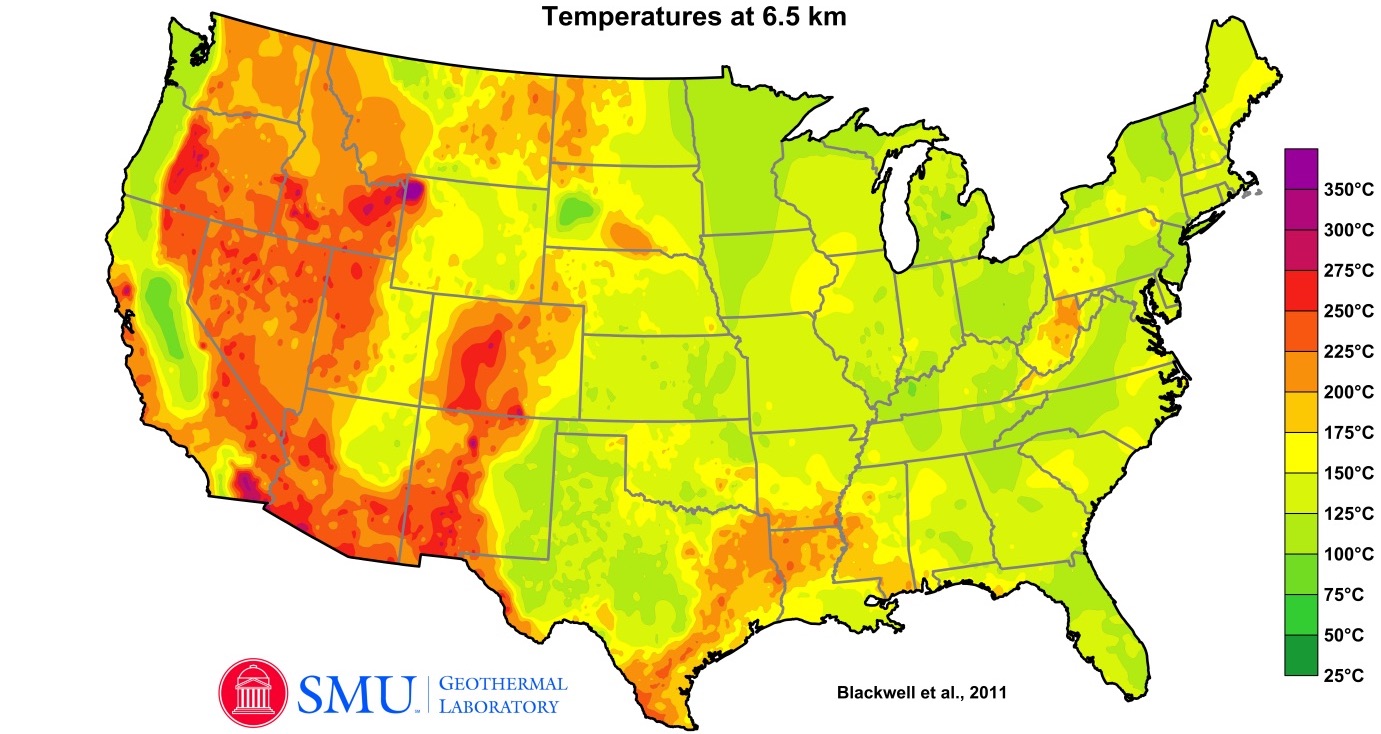
Figure 2. Temperature at 6.5 km (~21,000 feet) below the surface of the conterminous United States. This illustrates the immense amount of untapped energy that continually flows out of the Earth. Current technology allows for viable electricity generation from temperatures as low as 120°C (~250°F), but the much greater energy density at higher temperatures and depth holds even more promise and motivation for advancing the field of geothermal generation. [Blog entry]
Why Now?
Multiple technology advances in the past decade are converging to drive the boom in geothermal development;
- Advances in Oil & Gas drilling, engineering, stimulation and supporting areas (years ahead of conventional geothermal)
- Advances in conversion of heat to electricity;
- Turbine/heat exchange fluids
- ThermoElectric Generators (thermocouples)
- Additive Manufacturing
New methods for harvesting heat and producing energy have create a new paradigm in Geothermal.
The Advantages of Geothermal
Geothermal power plants require at least moderately greater up-front investment (in the drilling of wells) than a fossil fuel plant. However, over the long term, these issues are offset by the significant advantages of geothermal power:
- Baseload energy supply—Unlike solar and wind, geothermal power is always available and can be load-following.
- Self-contained and renewable—No consumables (fossil fuel) needed, indefinite lifetime (the oldest plant in the world, Larderello Italy, is still producing more than 100 years since startup), minimal maintenance.
- Scalable—If more power is needed, another well can be drilled locally.
- Distributed—Geothermal plants, generally in the 10–100 MW range, can be built near where the power is needed.
- Safe—No combustion or radioactivity involved.
- Green—No pollution/greenhouse gas emissions, and even the potential to be slightly carbon negative.
Energy Storage and Direct Use
Many variations exist on the main idea of geothermal energy. Using the Earth as a battery could allow for wind and solar to become baseload power without the heavy environmental cost of batteries. Geothermal is already widely used for building heating and cooling, and the final stage of any geothermal power plant will likely use “waste” heat for this purpose.
Geothermal Power for Space
Looking beyond Earth, as humanity expands into the solar system, we will need safe, practical power systems. As you move out from the sun, solar power becomes less practical, and fission has significant drawbacks—geothermal power has the potential to become the best power source on some worlds. In particular, multiple moons of Jupiter and Saturn have active geyser systems, indicating geothermal activity on a planetary scale (fig. 3). There is also near-term potential for solid-state (thermocouple-based) geothermal power in the polar regions of the Moon. Bureau researchers are beginning to assess this potential.
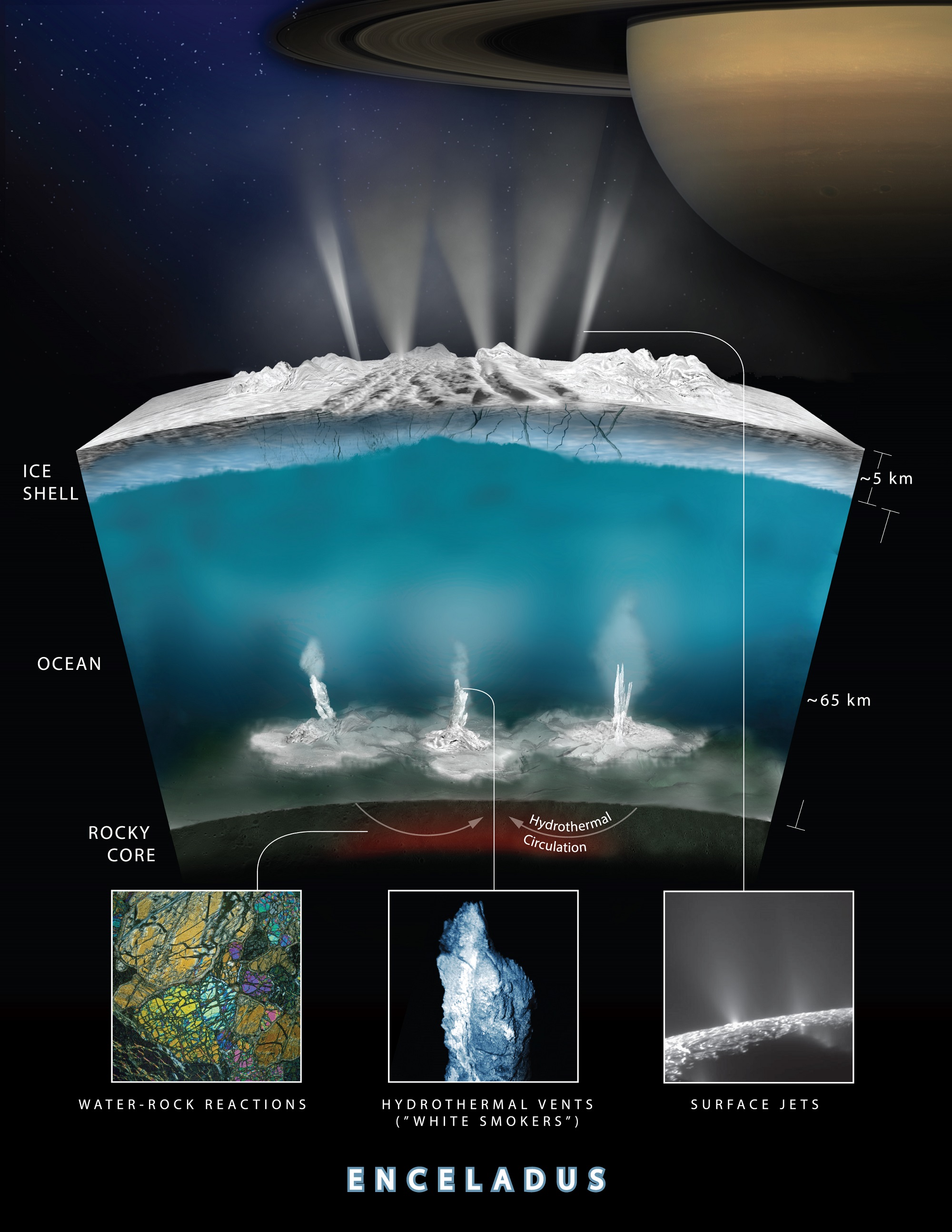
Figure 3. Multiple icy moons in the outer solar system appear to have vast subsurface oceans, as indicated by surface features including geysers hundreds of kilometers high. Settings such as these may be suitable for developing geothermal power. Illustration courtesy of NASA.
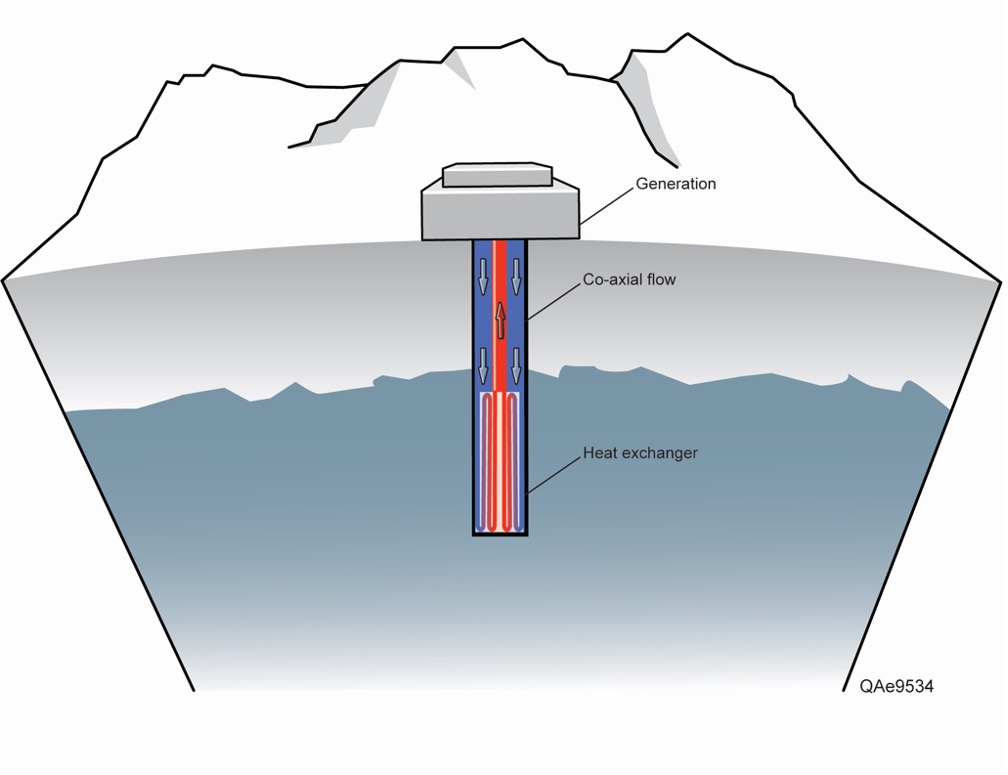
Figure 4. Configuration of a geothermal power system on an icy body. Coaxial flow to a heat exchanger in the subsurface ocean provides the temperature difference with ambient at the surface to generate power off of.
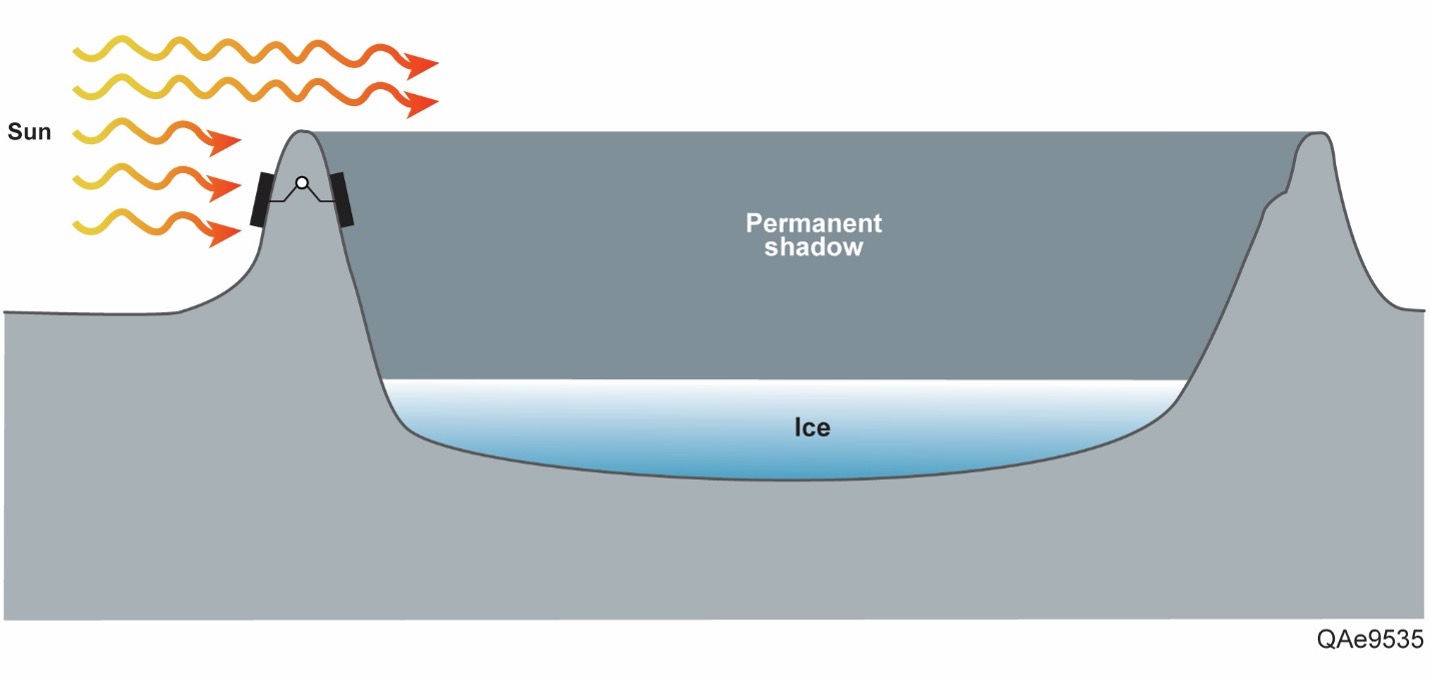
Figure 5. The rim of polar region craters of the Moon provide the large temperature gradient needed to generate power - in this case a Thermo Electric Generator (TEG) with the hot side on the outside of the crater facing the sun and the cold side in the permanent shadow.
